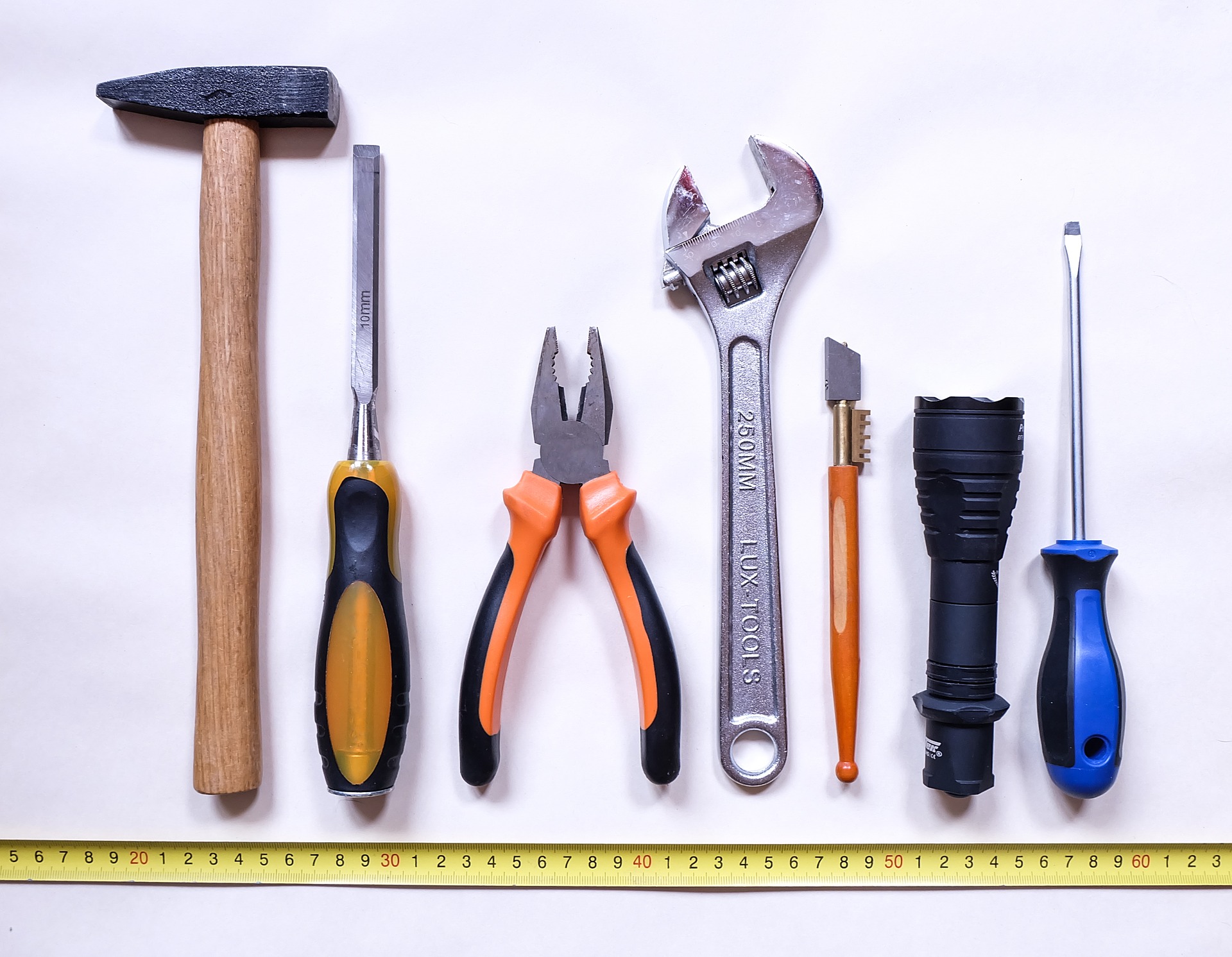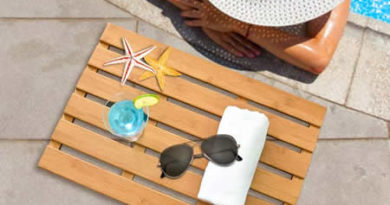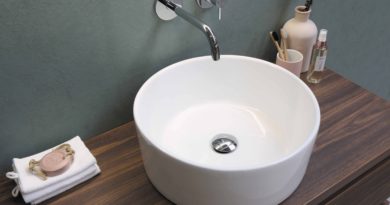How to Fix a Slow Draining Bathtub
**Articles may contain links that I earn compensation for if clicked and you make a purchase. As an Amazon Associate, I earn from qualifying purchases. These earnings do not actually impact the price of the product or service.
A slow-draining bathtub is a result of various debris blocking proper drainage. It is frustrating to stand in the pool of murky water slowly moving down the drain as you shower. However, a slow draining tub is an annoyingly common problem as well.
Yet, you can fix it in more than one way. In general, hair, soap scum, and other particles collecting in the plumbing system are the cause of slow draining tubs.
A lot of times, the bottom of the drain consists of a cross-section. Over time, hair starts getting caught up on it. It is very common for bathtubs that have a shower attached to them.
Either way, you can fix a slow draining tub by yourself and avoid calling a plumber. You don’t require any special tools except the plumber’s snake, available at any hardware store.
Table of Contents
Bathtub Drain Structure
 Before you start, take some time to learn the bathtub drain structure. The drainage system consists of an L-shape with a tub drain, an overflow tube, and a stopper mechanism. The stopper mechanism can be raised and lowered inside the overflow tube.
Before you start, take some time to learn the bathtub drain structure. The drainage system consists of an L-shape with a tub drain, an overflow tube, and a stopper mechanism. The stopper mechanism can be raised and lowered inside the overflow tube.
Additionally, there is a P-trap where the tub’s drainage system directs the used water. Most of the clogging can occur in the P-trap region.
Apart from that, it is generally a good practice to clean your bathtub drain once or twice a year. Consistently keeping the drain clean will prevent soap scum and hair from getting clogged in the drain.
Easy Ways to Fix a Slow Draining Bathtub
Before starting, you must remove the bathtub drain or the drain plug. At this point, you might have to use screwdrivers, pliers, or other tools to remove the drain cover. Hence, it depends on how the bathtub drain cover seats on your tub.
A small tip would be to cover the drain with a towel to prevent any tools or screws from falling. Aside from that, lay towels around to absorb any water that spills. On that note, drain water is unsanitary, so it is advised you protect your hands from it with the use of gloves.
Here is a quick and easy guide on how to fix a slow-draining bathtub all by yourself.
Baking Soda and Vinegar
Baking soda and vinegar are one of the more natural cleaning solutions for a slow bathtub drain.
Cleaning chemicals can be expensive and release harmful fumes into the air. Also, they can also cause damage to your skin as well as the structure of your bathtub. However, they might be the best solution for moderately clogged tubs.
Additionally, the main advantages of this method are that it is pollution-free and won’t cause any damage to the plastic pipes.
How to Clear a Bathtub Drain Using Baking Soda and Vinegar
- After carefully removing the bathtub drain cover, try to remove as much debris and hair as possible.
- Take a half cup of baking soda and pour it down the drain.
- Take a cup of white vinegar and pour it onto the baking soda.
- Let the two ingredients combine and foam for about five minutes.
- Rinse the mixture with hot water for about a minute or more. Make sure you use enough water.
- Finally, test out the bathtub drainage speed to see if it is still slow.
Plunger
Using a plunger to clear any drain is always worth a shot. At the same time, the plunger method is the cheapest and fastest route overall.
So, plunging can be helpful, but it depends upon the type of blockage for your slow-draining bathtub. On top of that, it also depends on the type of your drain and on the location of the clog. For instance, if the clog is deep inside the drain and consists of mostly hair, this method won’t be as effective.

How to Clear a Bathtub Drain Using a Plunger
- Before sticking the plunger right on the drain, make sure you remove the bathtub drain stopper and the overflow plate.
- Then, block the overflow opening with a cloth or duct tape to seal it. In that manner, blocking the overflow opening will make the plunger more effective.
- Another helpful tip would be to coat the plunger rim with petroleum jelly. The petroleum jelly will help get a better seal on the drain.
- Next, fill enough water into the tub to cover the plunger cup. Now, insert the plunger into the water so that no air is trapped under it.
- Once the plunger is in place, push down and pull up on the plunger for about 20 seconds. Make sure the plunger doesn’t slip and keep its seal.
- Afterward, flush the drain with hot water.
- Repeat the process five to six times, and if the clog remains, try a different method.
Commercial Clog Remover
Commercial clog remover is a chemical alternative for fixing a slow-draining tub. In short, when other mechanical methods fail, commercial clog removers come to the rescue.
Although these chemicals help you fix your clogged bathtub drain, they are pretty harmful. Hence, they can easily cause damage to the surface of your tub as well as the sewer lines.
How to Clear a Bathtub Drain Using a Commercial Clog Remover
- Drain cleaners are harmful to your skin and eyes, so take all the safety precautions before using them on your slow drain.
- If you are using a liquid clog cleaner, make sure you pour the liquid into a measuring cup and carefully pour it down the drain instead of squeezing it directly from the bottle.
- The amount of cleaner required will vary according to the cleaner you use for your clogged drain.
- Either way, wait for 30 minutes for the clog to clear.
- Then, flush the tub with hot water.
- Similarly, use 1-3 tablespoons of chemicals with one cup of cold water for powder drain cleaners.
Remove the Drain Stopper
Removing the drain stopper for inspection is a method you should resort to if none of the above tricks work. On that note, the above steps avoid the need to remove the debris, soap scum, and other clogged materials from your slow-draining tub.
You can start by unscrewing the drain and taking off the overflow plate. After that, you can remove the drain stopper.
At this point, note that the drain stopper operates by raising and dropping a plunger that opens and closes the bathtub drain. So, it works with the help of a small lever.
However, if the stopper isn’t working correctly, it might cause the plunger to be in a semi-closed position. As a result, this may restrict the water flow causing the water to drain slowly.
Luckily, you can quickly fix the stopper by adjusting the position of the plunger. Then, set the plunger back in place with the help of the lock nuts that hold it to the threaded rod.
Aside from that, if the stopper is working fine, then the reason for a slow draining bathtub is likely to be a clog. Therefore, you will require other tools or methods to deal with it.

Hose and Rubber Ball
This technique might seem odd, but it is valuable, and you can perform it with the help of a friend. As for tools, you’ll require a garden hose, a rubber ball, and a nearby faucet.
How to Clear a Bathtub Drain Using a Hose and a Rubber Ball
- Attach the hose to a nearby faucet. Ensure the hose is long enough to reach the drain opening of the bathtub.
- Block all the nearby drains and move the hose down the drain opening.
- Fix the hose in place by packing rags around it tightly.
- Now, place the rubber ball at the bottom of the tub to block the drain. It will prevent the water from flowing out of it when you turn on the water hose.
- Seal the drain plug by pressing down on the rubber ball.
- Next, hold the hose while another person turns the hose on and off.
- Repeat the process multiple times to flush the blockage.
Plumber’s Snake
A plumber’s snake is readily available at any hardware store. It is one of the easy ways you can fix clogged tub drains. In addition, this method provides the highest success rate when dealing with clogged drains.
How to Clear a Bathtub Drain Using a Plumber’s Snake
- For this method, you will need to remove the tub drain stopper.
- Move the snake down the bathtub drain opening until your reach the clog.
- Then, use the handle to pull the plumber’s snake out.
- Run water through the drain to check if the clog is completely gone.
- Repeat the process several times to achieve desired results.
Contact a Plumber
If none of the above methods work, or if you don’t feel comfortable about opening up your clogged shower drain and working with chemicals, you can always call a professional plumber. However, if you want to save money, call a plumber as a last resort.
Final Words
Learning to fix a slow-draining tub is a valuable skill. It is super easy to understand, and the methods mentioned above are convenient for anyone who wants to try it. At the same time, you can also apply some more caution to avoid having to deal with a clogged drain soon.


